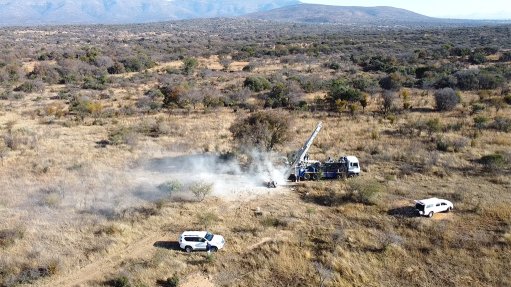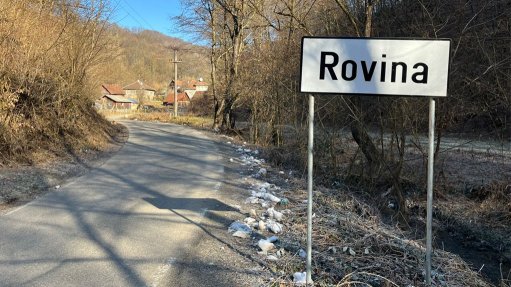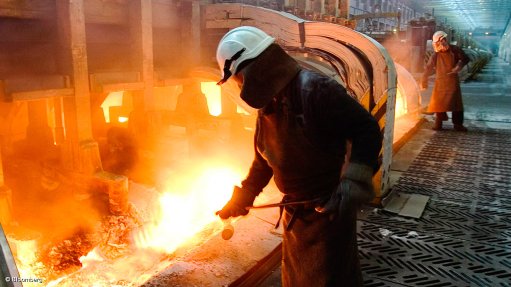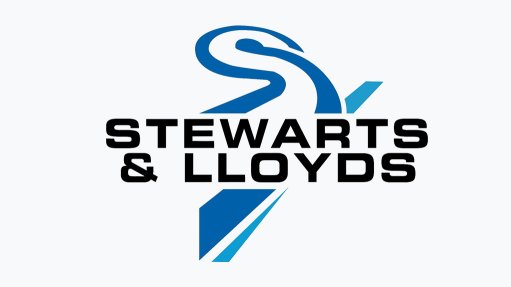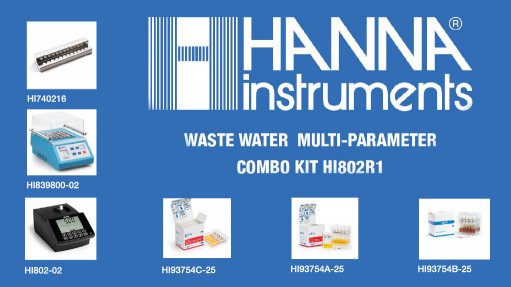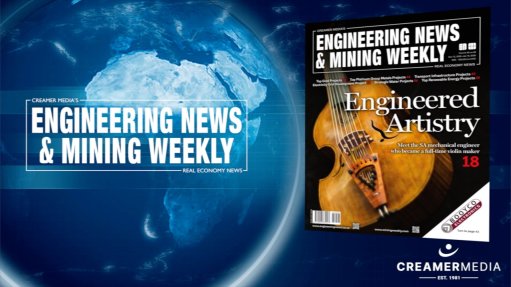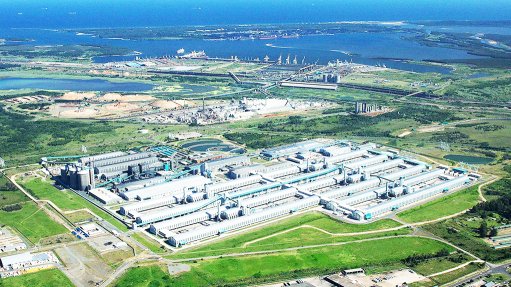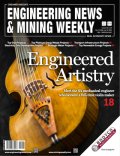Rainbow says work at Johannesburg laboratory progressing well
After being in operation for about three months, London-listed Rainbow Rare Earths says work at its laboratory, in Johannesburg, is progressing well.
The company notes that the laboratory is equipped with “state-of-the-art” technology that allows for the performance of leaching, ion exchange, precipitation and separation testwork across the full Phalaborwa processing flowsheet.
Additionally, the laboratory features a “cutting-edge” inductively coupled plasma - mass spectrometer for analysis of samples taken from testwork, which enables the immediate assay of grades ranging from low parts per billion to high purity, to be reported internally.
Rainbow says this level of accuracy is vital for the evaluation of its separation testwork, noting that the laboratory is equipped to automate testwork where possible to ensure accurate and rapid results.
Turnaround times for these tests are, therefore, considerably faster than the typical 72 hours to three weeks experienced when using external providers.
The company explains that this rapid turnaround ensures that testwork can be continuously progressed in a targeted and informed manner based on previous test results.
By carrying out the test and assay work at in-house facilities, Rainbow says it has delivered significant savings compared with using third-party providers and expects to pay back the modest cost of building the laboratory within a few months.
“We are very proud of the laboratory we have built in Johannesburg which incorporates state-of-the-art equipment that enables the performance of testwork across the full Phalaborwa processing flow sheet,” says CEO George Bennett.
Testwork and associated work in recent months has been focused on undertaking trade-off studies for the leaching circuit to minimise both operating and capital costs; maximising rare earth recovery and impurity rejection through continuous ion exchange (CIX); and defining the optimal path to purification of the mixed rare earth feed ahead of final separation.
The leach circuit is estimated to represent about 80% of the Phalaborwa flowsheet and therefore offers the best opportunities for cost optimisation.
While Phalaborwa's capital and operating costs are already considerably lower than the majority of the rare earth peer group, the work that was done during the project's interim study identified areas where further testwork and trade-off studies have potential to reduce costs, making Phalaborwa even more resilient in terms of its economics, the company says.
The key optimisation opportunities identified, which are expected to deliver savings in power, reagent, labour and capital costs, include replacing the three-stage 30 ˚C leaching circuit with a two-stage higher temperature leach circuit with reduced residence times; mechanical vs hydraulic reclamation of the phosphogypsum; on-site sulphuric acid plant vs acid supplied from a third party; and the cost and supply resilience of third-party green energy vs Eskom power supply.
The company says it intends to use the results of the trade-off studies to provide the market with an update as to the potential impact on capital and operating costs for the project ahead of the definitive feasibility study publication.
Further, Rainbow says the extensive piloting work carried out to date has established that the production of a high grade, low impurity feed stream to the separation process is key to achieving separated rare earth oxides of the desired purity level.
The company notes that the development of the leaching process has successfully managed impurity build-up in the leach solution to prevent the impact of impurities on the extraction of rare earths from the phosphogypsum.
The company says it has seen the benefits in using CIX as the primary process to recover the rare earths from the leach solution, which is expected to successfully reduce impurities in an efficient and cost-effective way, producing a low-impurity feed stream for separation.
A number of resins and eluants have been tested at bench scale to select the configurations of the primary ion exchange rare earth recovery circuit to be used for pilot scale testwork.
Meanwhile, early testing is underway looking at key impurity levels from the primary CIX and proven rejection techniques ahead of separation.
For the separation testwork, Rainbow says it is important that the leaching and recovery options are finalised to ensure a representative feed.
Ahead of the final purification results, early ion chromatography separation tests are underway to establish rare earth performance under various configurations.
These tests are expected to accelerate the development of the final recipe once the purification steps are complete.
Article Enquiry
Email Article
Save Article
Feedback
To advertise email advertising@creamermedia.co.za or click here
Press Office
Announcements
What's On
Subscribe to improve your user experience...
Option 1 (equivalent of R125 a month):
Receive a weekly copy of Creamer Media's Engineering News & Mining Weekly magazine
(print copy for those in South Africa and e-magazine for those outside of South Africa)
Receive daily email newsletters
Access to full search results
Access archive of magazine back copies
Access to Projects in Progress
Access to ONE Research Report of your choice in PDF format
Option 2 (equivalent of R375 a month):
All benefits from Option 1
PLUS
Access to Creamer Media's Research Channel Africa for ALL Research Reports, in PDF format, on various industrial and mining sectors
including Electricity; Water; Energy Transition; Hydrogen; Roads, Rail and Ports; Coal; Gold; Platinum; Battery Metals; etc.
Already a subscriber?
Forgotten your password?
Receive weekly copy of Creamer Media's Engineering News & Mining Weekly magazine (print copy for those in South Africa and e-magazine for those outside of South Africa)
➕
Recieve daily email newsletters
➕
Access to full search results
➕
Access archive of magazine back copies
➕
Access to Projects in Progress
➕
Access to ONE Research Report of your choice in PDF format
RESEARCH CHANNEL AFRICA
R4500 (equivalent of R375 a month)
SUBSCRIBEAll benefits from Option 1
➕
Access to Creamer Media's Research Channel Africa for ALL Research Reports on various industrial and mining sectors, in PDF format, including on:
Electricity
➕
Water
➕
Energy Transition
➕
Hydrogen
➕
Roads, Rail and Ports
➕
Coal
➕
Gold
➕
Platinum
➕
Battery Metals
➕
etc.
Receive all benefits from Option 1 or Option 2 delivered to numerous people at your company
➕
Multiple User names and Passwords for simultaneous log-ins
➕
Intranet integration access to all in your organisation










